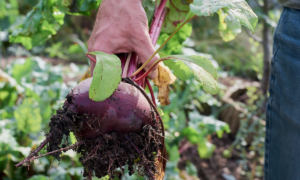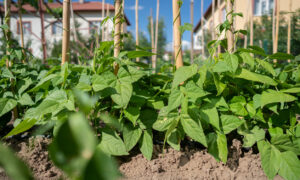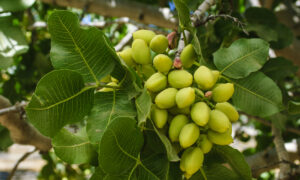We independently research, review, and recommend the best products. If you buy something through our links, we may earn a commission. Learn more.
Citrus plants are probably one of the last things you’d associate with the typical British garden. But if you’re looking to add some tropical flavour to your patch, then don’t be disheartened. With the right techniques – and a little bit of patience – it is possible to successfully grow and harvest oranges, lemons, and limes right here in the UK. In this guide, we’ll take you through everything you need to know about adding some colour and flavour to your garden by cultivating citrus trees.
Contents
Can you grow citrus trees in the UK?
Let’s bust a couple of myths. Although some gardeners in colder climates struggle to cultivate citrus plants, it absolutely is possible to successfully grow oranges, limes, and lemons in the UK. By creating the right conditions, and giving the plants extra care and attention, most gardeners should be able to produce beautiful, tasty fruits without leaving these shores.
And that brings us onto the second myth, namely that citrus fruits lack colour and sweetness when grown in colder climates. Although you might see a slower rate of fruit maturity when growing citrus plants in the UK, there are a wide range of factors that influence the taste and appearance of tropical fruits. Factors such as pruning, fertilization, and pest management will all have a sizeable impact on the quality of your harvest – and each of these elements is firmly under your control. By following best practices (which we’ll come onto) for growing citrus trees in colder climates, it is possible to produce fruit that’s both delicious and abundant.
Location, location, location
When growing citrus plants in the UK, location is everything. As you might expect, citrus plants need a great deal of sunlight – ideally 6 hours of direct sun per day. If this isn’t possible, though, then there are alternatives. One solution is to grow citrus plants in a greenhouse or conservatory where you have more control over the temperature.
Perhaps surprisingly, citrus plants don’t fare well in excessive heat. They typically thrive in temperatures ranging from 12°C to 20°C, and require some protection when the heat begins to exceed 25°C. During the winter months, when temperatures drop to single digits, I tend to cover the plants with horticultural fleece to provide protection from frost. Alternatively, you can bring your plants into the greenhouse during winter to help them ride out any cold snaps.
Soil requirements
Once you’ve landed on the right location, it’s important to start thinking about soil. Lemon, orange, and lime trees all require well-drained soil with a pH range of 6.0 to 7.0. If your soil is heavy and poorly drained, we recommend adding compost or organic matter to improve its quality. For gardeners looking to grow citrus plants in containers, be sure to use a high-quality, well-drained potting mix. Look out for mixes containing perlite or vermiculite that will help to improve aeration.
How to water citrus plants
One thing you’ll notice when growing citrus plants is that they require what feels like constant watering, especially during the warmer growing season. Water the plants thoroughly and deeply, and allow the soil to dry out slightly between waterings. Overwatering can lead to root rot, which can be fatal to the plant. In the winter months, it is best to reduce watering and let the soil dry out slightly more between waterings.
Fertilizing
Fertilization is another important factor to consider when growing citrus plants. If you want to produce healthy and tasty fruits, we recommend using a balanced fertilizer, formulated specifically for Mediterranean plants. During the growing season, it’s best to fertilize the plants every 2-3 weeks, before reducing the frequency as it starts to grow colder.
How and when to prune citrus plants
When growing citrus plants, don’t discount the importance of proper pruning. While sometimes overlooked, this is vital for maintaining the shape and size of the orange, lemon, or lime plant. Be sure to prune the plant in late winter or early spring before the new growth begins, and don’t forget to remove any dead, diseased, or crossing branches.
Keeping your citrus plant safe from pests and diseases
Much like anything else in your garden, citrus plants can be affected by pests and diseases. Scale insects and citrus cankers are particularly common concerns, so be sure to inspect your plants regularly to detect any problems early. If you spot anything untoward, you can use insecticides and fungicides to manage any outbreaks.
Harvesting
Citrus trees can actually take several years to produce fruit. However, if you’re prepared to put in the work, they’re among the most rewarded plants to grow. Get the growing conditions right, and you’ll eventually be rewarded with juicy and delicious fruit, likely after 2-3 years. When ready for harvesting, citrus fruits are usually ready to be picked in the winter months, and can be harvested as soon as it is ripe.
To sum up, growing citrus trees in the UK can be a challenging but rewarding experience. By following the tips in our comprehensive guide, we’re confident you’ll be able to grow healthy citrus plants in your garden or greenhouse. Let us know how you get on!









